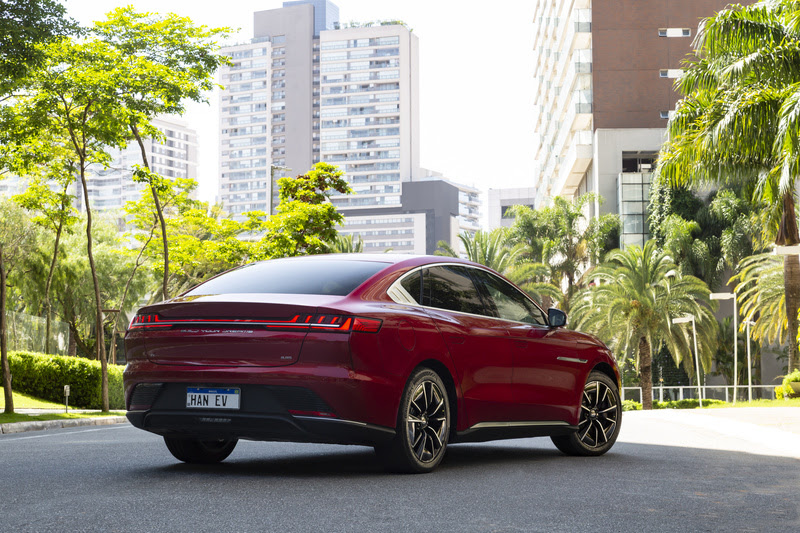In 2022, the Inflation Reduction Act (IRA) emerged as a groundbreaking legislative package aimed at reshaping America’s economic landscape, with a significant focus on clean energy and electric vehicles (EVs). This act is not only revolutionizing the way we think about transportation but is also accelerating the shift towards an EV lifestyle. With the global EV market expected to reach a valuation of $802.81 billion by 2027, according to Bloomberg, understanding how the IRA catalyzes this shift is crucial for consumers and industry insiders alike.
In this article, we will explore how the Inflation Reduction Act is driving the transition to electric vehicles, the benefits of adopting an EV lifestyle, and practical tips for those considering making the switch. We’ll delve into the incentives, infrastructure developments, and the broader societal impacts of this monumental shift, providing you with a comprehensive guide to navigating the EV revolution.
The Power of Incentives: Driving the EV Market Forward
Financial Perks of the Inflation Reduction Act
One of the most significant aspects of the Inflation Reduction Act is the array of incentives it offers to both consumers and manufacturers. These incentives are a driving force behind the rapid adoption of electric vehicles. Here are some key highlights:
- Tax Credits for Buyers: The IRA provides up to $7,500 in tax credits for purchasing new electric vehicles and up to $4,000 for used EVs. This makes EVs more financially accessible to a broader audience.
- Support for Manufacturers: The act allocates substantial funding to support domestic battery production, encouraging automakers like Tesla, Ford, and Rivian to ramp up their EV offerings.
- Infrastructure Investments: With $5 billion earmarked for developing EV charging networks, the act aims to reduce range anxiety and make charging stations as ubiquitous as gas stations.
Impact on EV Adoption Rates
These incentives are already showing results. According to Reuters Mobility, EV sales in the U.S. surged by 40% in the first half of 2023 compared to the previous year. This growth trajectory is expected to continue as more consumers become aware of the financial benefits and long-term savings associated with EV ownership.
Building a Sustainable Future: Infrastructure and Technology
Expanding Charging Networks
One of the biggest hurdles to widespread EV adoption has been the lack of charging infrastructure. The IRA’s investment in charging networks addresses this issue head-on. Here’s how:
- Increased Charging Stations: The U.S. Department of Energy reports a 30% increase in charging stations nationwide since the IRA’s implementation.
- Fast-Charging Technology: New chargers are equipped with fast-charging capabilities, allowing EVs to reach 80% charge in under 30 minutes.
Advances in Battery Technology
The IRA also places a strong emphasis on advancing battery technology, which is critical for improving EV range and reducing costs:
- Solid-State Batteries: Companies like Volkswagen and Hyundai are investing in solid-state battery technology, promising higher energy density and faster charging times.
- Recycling Initiatives: To address environmental concerns, the act supports battery recycling programs, ensuring that materials like lithium are reused, minimizing waste.
Real-World Adaptation: Tips for Embracing the EV Lifestyle
How to Choose the Right EV
Selecting the right EV can be daunting, given the plethora of options available. Here are some tips to simplify the process:
- Assess Your Needs: Consider your daily commute, family size, and budget. Options like the Nissan Leaf are ideal for city driving, while the Tesla Model Y caters to families.
- Compare Features: Look at range, charging time, and safety features. Websites like InsideEVs offer detailed comparisons.
- Test Drive: Always test drive a few models to get a feel for the driving experience and comfort.
Where to Charge Your EV
With the expanding charging network, finding a convenient spot to charge your EV is easier than ever:
- Home Charging: Install a Level 2 charger at home for overnight charging.
- Public Charging: Use apps like PlugShare to locate nearby charging stations, including fast-charging options.
- Workplace Charging: Many employers are installing chargers as part of their sustainability initiatives.
Conclusion: Embracing a Cleaner, Greener Future
The Inflation Reduction Act is more than just a piece of legislation; it is a catalyst for change, propelling us toward a sustainable future. By accelerating the shift to electric vehicles through financial incentives, infrastructure development, and technological advancements, the IRA is paving the way for a cleaner, greener planet.
As we embrace this EV lifestyle, the benefits are clear: reduced emissions, lower fuel costs, and a more sustainable way of living. If you’re considering making the switch, now is the perfect time to explore the possibilities and become part of the EV revolution.
Are you ready to drive into the future with an electric vehicle? Share your thoughts and experiences in the comments below. Together, we can accelerate the shift toward a sustainable future, one electric vehicle at a time.

